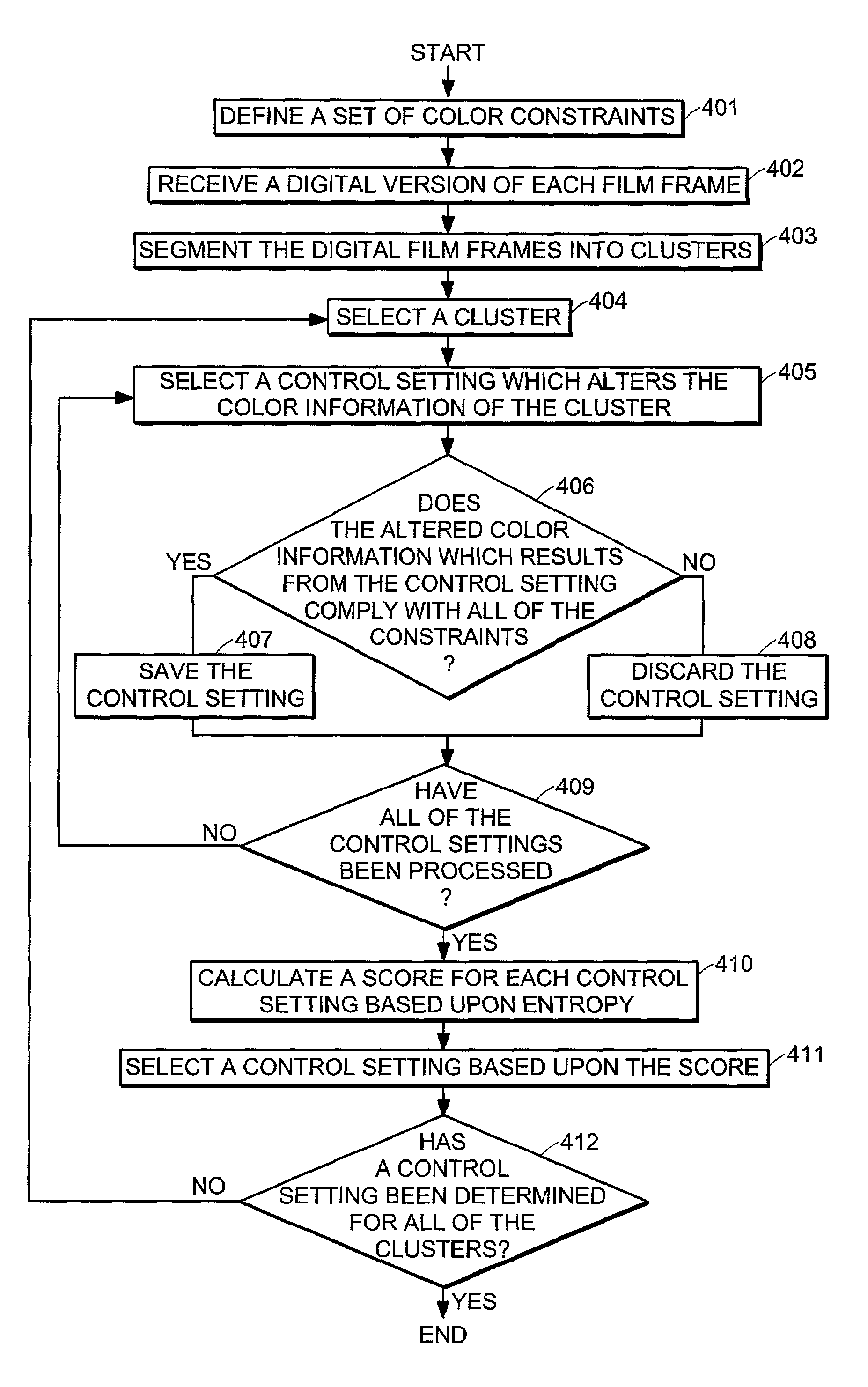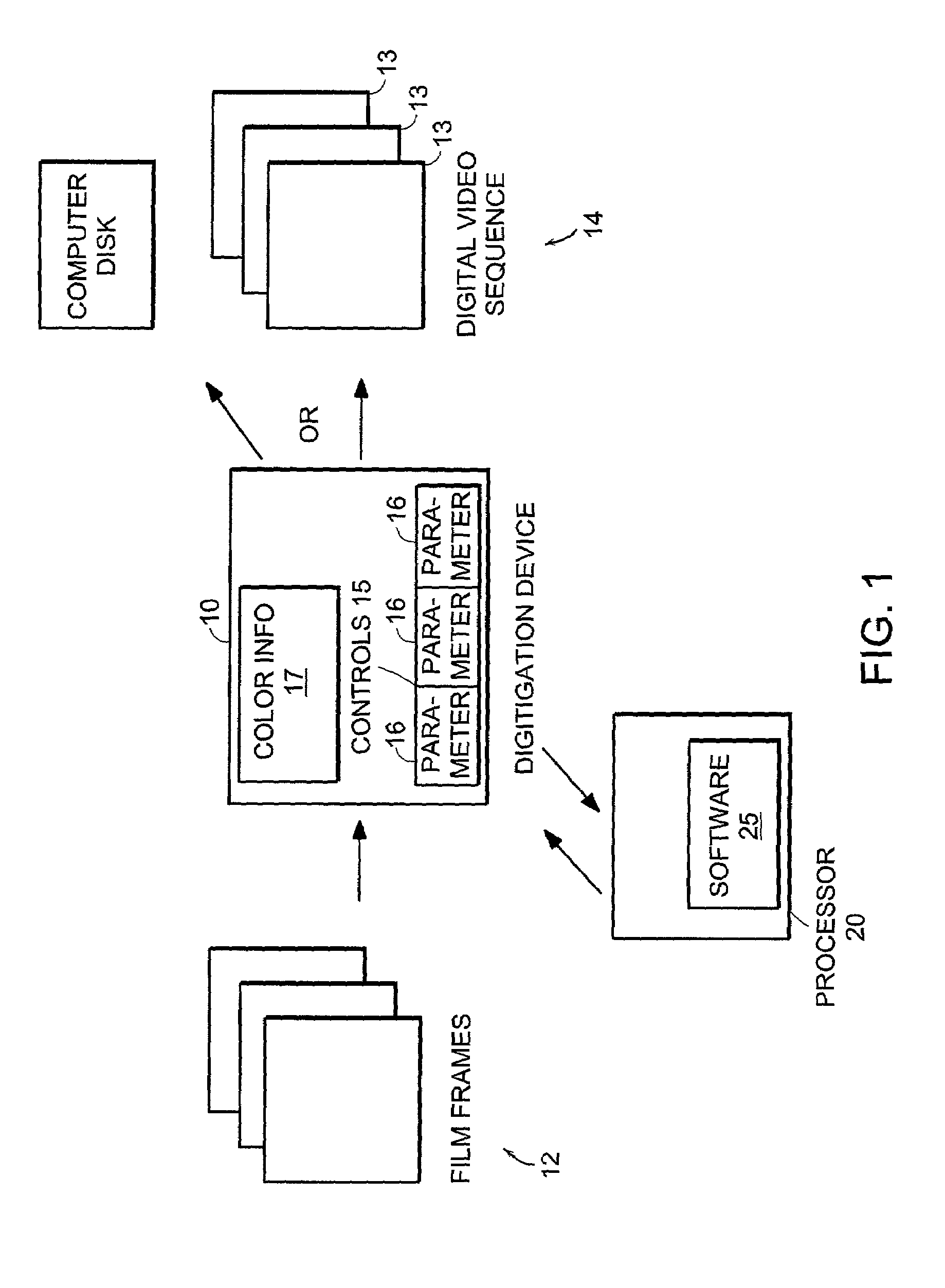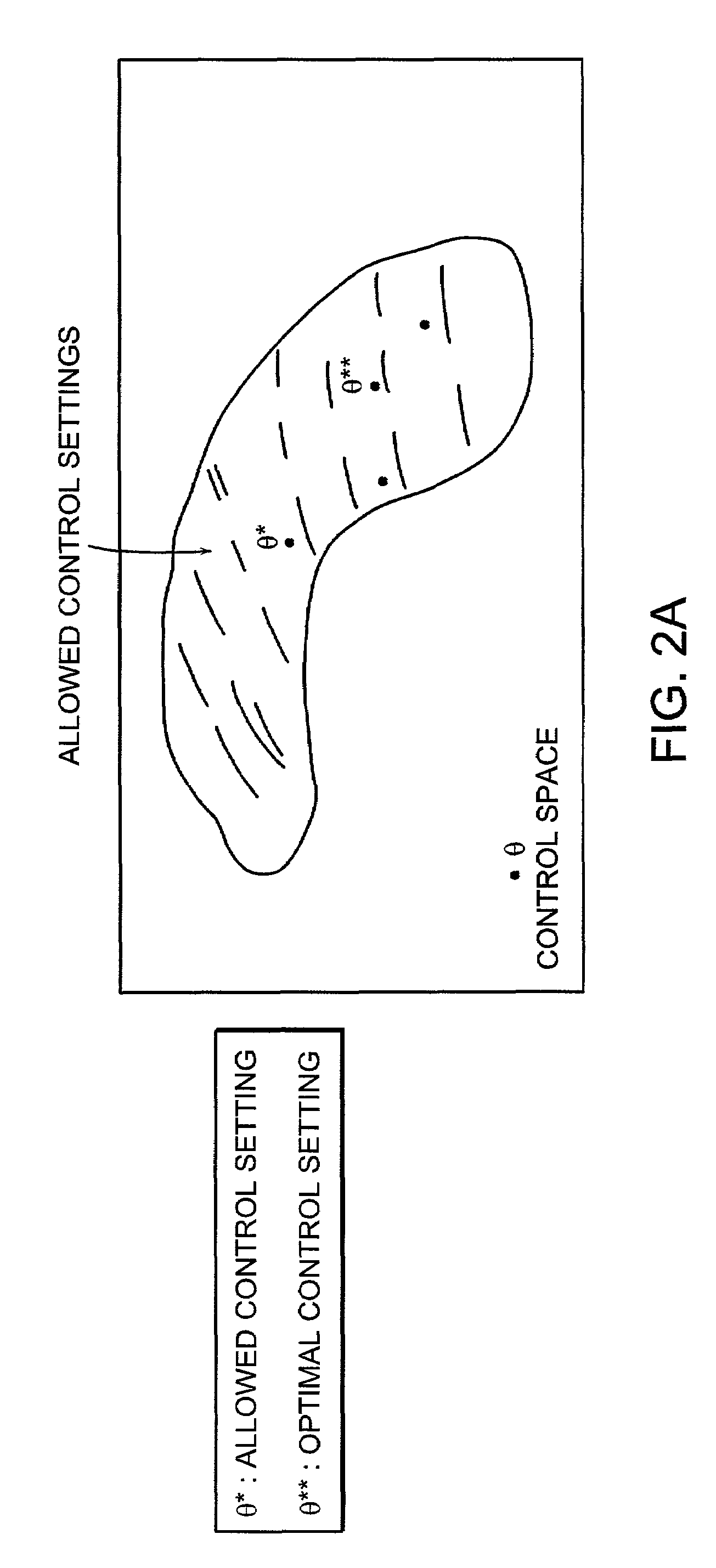Automated color control in film-to-digital transfer
a color control and digital transfer technology, applied in the field of automatic color control in film-to-digital transfer, can solve the problems of not being able to automate the current system, and achieve the effects of good color balance, good contrast, and good dynamic rang
- Summary
- Abstract
- Description
- Claims
- Application Information
AI Technical Summary
Benefits of technology
Problems solved by technology
Method used
Image
Examples
Embodiment Construction
[0016]It should be understood by one of ordinary skill in the art that film is composed of frames which are whole images while digital video is generally composed of fields which are one half of a whole film image. Video fields are either designated as odd or even corresponding to the lines of an image frame which are represented by the field. Digital video may also be composed of frames representing a whole image from a film frame. The term “frame” as used herein shall apply to both complete images and also to interlaced image fields. The term “cluster” as used herein refers to one or more frames (film / video). Generally a cluster is a group of frames which compose a scene or a group of scenes from a film. Clusters can be designated by an operator or may be automatically determined. The term “color information” shall refer to the digital data that is associated with color. For example R,G,B values for a pixel, field, frame or cluster. The term “color parameter” includes but is not l...
PUM
 Login to View More
Login to View More Abstract
Description
Claims
Application Information
 Login to View More
Login to View More - R&D
- Intellectual Property
- Life Sciences
- Materials
- Tech Scout
- Unparalleled Data Quality
- Higher Quality Content
- 60% Fewer Hallucinations
Browse by: Latest US Patents, China's latest patents, Technical Efficacy Thesaurus, Application Domain, Technology Topic, Popular Technical Reports.
© 2025 PatSnap. All rights reserved.Legal|Privacy policy|Modern Slavery Act Transparency Statement|Sitemap|About US| Contact US: help@patsnap.com



